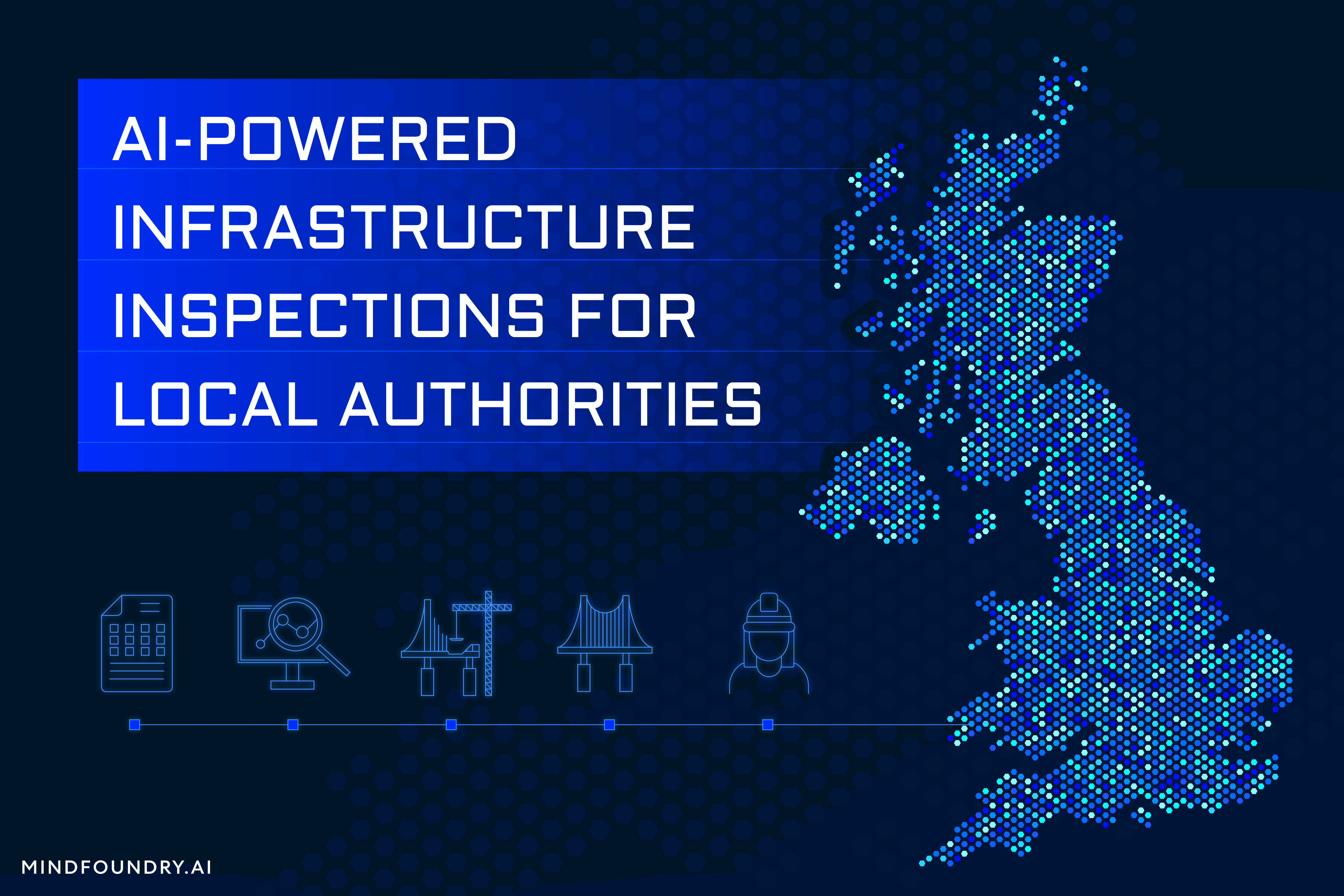AI, Insurance, and the UN SDGs: Building a Sustainable Future
Mind Foundry has been working alongside Aioi Nissay Dowa Insurance and the Aioi R&D Lab - Oxford to create AI-powered insurance solutions whose...

Fraud is one of the most pervasive threats to the insurance industry, causing damage to both businesses and customers. Every insurer takes steps to try and negate this threat, but how effective are these measures, and could AI hold the key to truly effective fraud detection?
The History of Insurance Fraud
Insurance is ubiquitous in modern society and accounts for over 7% of the world’s economic activity. Although the exact origins are difficult to pinpoint, we know insurance dates back to at least 1750 BC to the Babylonians and the Code of Hammurabi. This code, consisting of 282 laws carved onto a stone monument, established standards for commercial interactions, including some related to risk and insuring against it. While fraud isn’t mentioned specifically, we can safely assume that it has been present for as long as insurance itself, and the two are inextricably linked throughout history.
In 300 BC, a Greek sea merchant called Hegestratos tried to sink an empty ship in order to keep its contents and not repay a costly loan. He was caught in the act and drowned trying to escape. In 1972, Victor Null patented an engine that dramatically reduced air pollution and later went into business with the Calvert brothers. Unbeknownst to Mr. Null, the Calvert brothers took out a $2m life insurance policy on the inventor’s life, and he was later found shot dead. An investigation found that the Calvert brothers had offered a friend $5,000 to kill the inventor, and they were both jailed.
More recently, in 2002, John and Anne Darwin, with their debts skyrocketing, famously attempted a bold life insurance scam by faking John’s death in a canoeing accident. Anne cashed in on £680,000 worth of life insurance claims and used it to pay their debts. The couple then started a new life in Panama under a false identity before eventually being caught, thanks to a social media post. They were each sentenced to six years in prison. But whilst these attempts all failed, countless others throughout history have managed to slip through the cracks, exploiting loopholes and circles of trust in order to leverage profit at an insurer’s expense.
Today, technological advancements coupled with the post-pandemic cost-of-living crisis have caused people to turn to fraud out of desperation as well as opportunism. From opportunistic fraud to ghost-broking and exaggerated claims, we’re seeing familiar forms of fraud on the rise, not just in insurance but across all industries. More concerning still, however, is the emergence of new types of fraud - behaviours we haven’t seen before that evade our current methods for containment. According to a recent report by PWC, 70% of companies surveyed say they have experienced new types of fraud since COVID-19. Fraud is evolving and spreading, and as it does, so too must our measures for counteracting it.
How Insurers Try to Combat the Cost of Fraud
According to the AFI, the UK alone could be losing up to £219 billion every year to fraudsters, 72% of which is within the private sector in industries like insurance. For any insurer, paying out on fraudulent claims doesn’t just damage the business financially; it also affects the lives of individuals who are either victims of fraud directly or end up having to pay higher premiums as the costs are passed down.
Currently, insurers are using a range of methods in their fraud detection efforts. Most have a team of claims handlers that manually assess a group of claims, looking for the telltale signs of fraud. However, relying entirely on an in-house team of claims handlers makes scaling their work challenging and costly. If you want to detect more fraud, you’ll need to hire and train more people. Also, you can’t avoid the fact that human error will play a part, and every fraudulent claim that gets past your team affects your bottom line.
Insurers can address some of these challenges by employing algorithms that are programmed with rules to analyse huge sets of claims and flag those that fulfil specific criteria for further investigation. The accuracy of these algorithms, though, is limited by the specific nature of the rules with which they are programmed. Reprogramming these algorithms with new rules for new fraud types is a step in the right direction, but it is both time-consuming and expensive.
Consequently, many insurers look to the SaaS market for off-the-shelf fraud solutions. But this kind of SaaS is typically expensive, and whilst they sometimes perform initially, as new types of fraud emerge, the solutions providers are slow to update them, and in most cases, this requires you to pay them to come back and update their solution themselves. This can take months or years and represents an added cost to the business. The fact that the intellectual property (IP) of the solution belongs to the SaaS provider also means that any IP advantage that one insurer might experience when they discover something unique in their sector gets eliminated as it gets shared equally by all their competitors using the same solution. Since insurance is so competitive, expensive off-the-shelf SaaS products that don’t provide a business advantage are impossible to justify.
Given the shortcomings of these approaches, it’s no surprise that so many insurers are turning to custom-built AI solutions as a more effective means of detecting and combatting fraud. AI’s extraordinary capacity for ingesting, processing, and identifying patterns and anomalies within vast quantities of data makes it uniquely suited for this purpose. Today, insurers who don’t have the time or resources to build their own in-house data science teams are turning to consultancies to unlock this value. But this comes with its own complications. Even though Machine Learning (ML) models represent a more intelligent approach to detecting fraud, these ML models are also susceptible to changing patterns of human behaviour and suffer significant performance decline over time. Studies have actually found that 91% of models decay within the first year post-deployment.
When that happens, the only way to bring a model back to day-one performance is to retrain it or rebuild it. Retraining requires expertise that may not be available in-house, and the consultants with the relevant skill set will almost always recommend the more expensive option, i.e. rebuilding the model with the latest techniques so that its new operating performance is even better than it was before. Since we all want the best, this can be a convincing argument, and yet it represents unforeseen and unplanned capital expenditures that extend the amount of time it takes for the solution to achieve its expected ROI.
The Solution Insurers Need
Truly effective fraud detection requires a single solution that combines the strengths of all these approaches whilst mitigating their weaknesses. Insurers need a solution that integrates their unique business operations and domain expertise with the data-processing power of an algorithm but with the ability to learn new rules and patterns from the data itself rather than needing reprogramming. They need a solution that is intuitive, means-tested, and easy to use, like SaaS, but that is more agile and adaptable, with the opportunity to retain IP to maintain a competitive advantage. They also need to implement the necessary AI governance to ensure their fraud models are reliable, compliant, and able to be scaled effectively. With this kind of solution-specific AI, insurers can achieve unprecedented levels of accuracy in a way that augments their teams' abilities and allows AI to become a reliable and trusted partner in detecting fraud.
An example of this can be seen in a solution we recently built for our customer, Aioi Nissay Dowa Europe (AND-E). AND-E required a unique fraud detection and prediction solution based on their own specific requirements that no off-the-shelf solutions could meet. The end result empowers AND-E’s claims experts to identify, prioritise, and investigate fraudulent activity by analysing a vast set of claims, alongside ingesting over seven years of data, including 20 million unstructured documents, to determine which ones showed signs of potential fraud.
The most relevant claims get flagged and prioritised in an investigations dashboard so AND-E can resolve them based on the likelihood that they contain actual instances of fraud. As new patterns emerge, the solution automatically and continuously integrates data back into the model using a Continuous Metalearning capability to improve performance and govern risks over time rather than decay like most machine learning models.
This has led to AND-E:
Saving 2% on their capped indemnity spend in 2022, tracking to double that in 2023
Increasing the detection of fraudulent claims by 120%
Increasing referrals retained by the fraud department by 800%.
This definitively shows that, when adopted effectively, the right AI solution can add real and lasting value in the fraud detection space. The key to the solution’s success was the way it was customised to AND-E’s specific requirements and enabled the claims team to interact with it to understand how and why recommendations are made. Human-AI collaboration is fundamental to successful, real-world AI adoption in insurance.
We cannot predict what new kinds of insurance fraud might emerge in the coming years. But we do know that AI won’t just play a pivotal role in combatting these new fraud types; it will be integral to the future of the insurance industry as a whole. If insurers can successfully combine their own teams’ experience and skill set with AI’s unparalleled data, then they will be able to unlock the best outcomes for both their customers and their business.
Enjoyed this blog? Check out 5 Ways to Manage AI Responsibly in Insurance.

Mind Foundry has been working alongside Aioi Nissay Dowa Insurance and the Aioi R&D Lab - Oxford to create AI-powered insurance solutions whose...

Local authorities need to support their funding requests with high-quality data. The problem is that they can't obtain this data at the required...

The UK-USA Technology Prosperity Deal sees overseas organisations pledging £31 billion of investment into UK AI infrastructure. As AI investment...